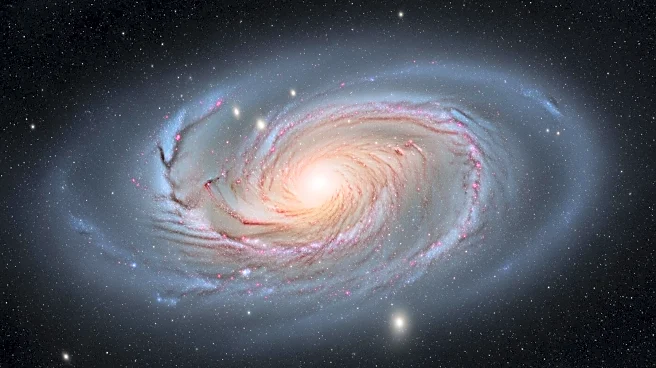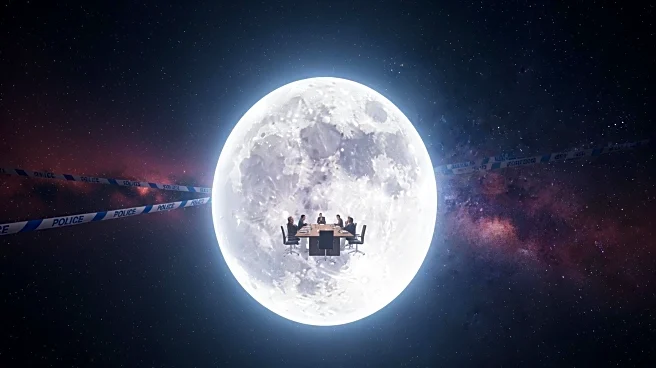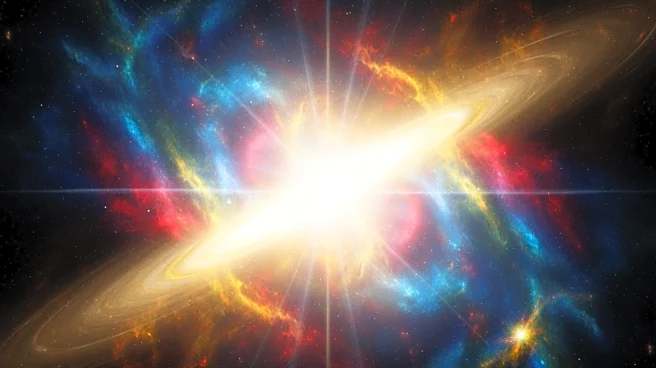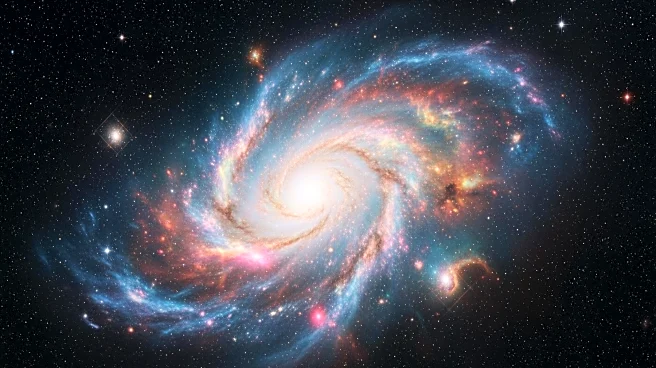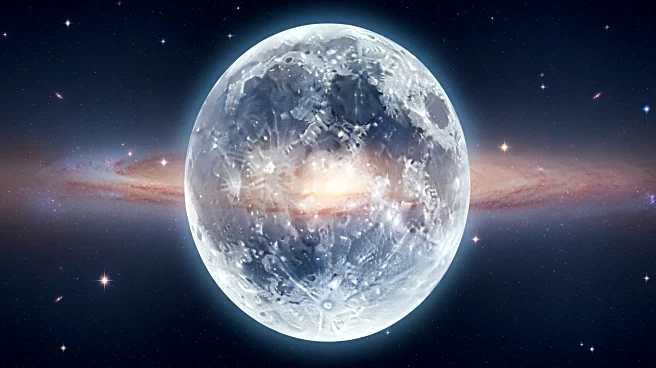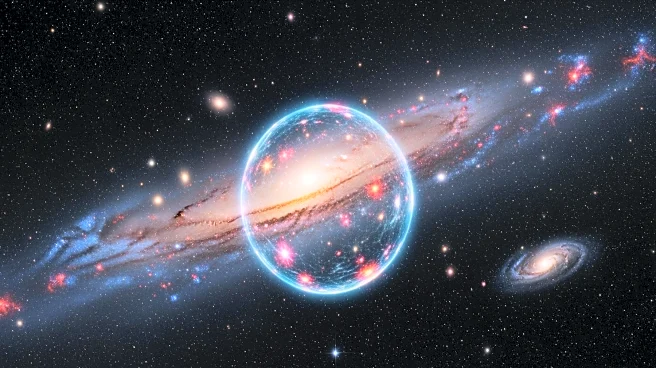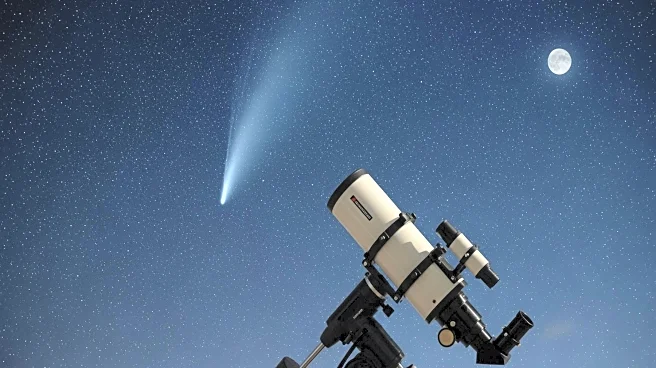What's Happening?
Astronomers have discovered a giant ripple in the Milky Way's disk using data from the Gaia space-mapping spacecraft. The wave-like corrugation was detected in the outer regions of the galactic disk, suggesting
a massive event in the galaxy's past. The ripple may have been caused by an encounter with another galaxy, such as the Sagittarius dwarf galaxy, impacting the Milky Way's structure.
Why It's Important?
This discovery provides insights into the dynamic nature of the Milky Way and its interactions with other galaxies. Understanding the ripple's origin and effects can enhance knowledge of galactic evolution and the forces shaping the universe. The findings contribute to the broader field of astrophysics, offering clues about cosmic events and their impact on galactic structures.
What's Next?
Further research is needed to pinpoint the source of the wave and its implications for the Milky Way's future. The upcoming Gaia data release in December 2026 will provide additional information, allowing astronomers to refine models and theories. Continued study of the ripple may reveal new aspects of galactic dynamics and interactions.
Beyond the Headlines
The discovery highlights the importance of space-based observatories in advancing astronomical knowledge. It also underscores the complexity of galactic structures and the ongoing processes shaping the universe, prompting discussions about the interconnectedness of cosmic phenomena.
